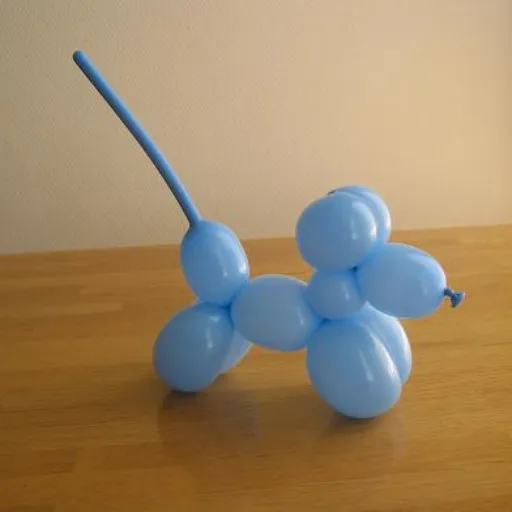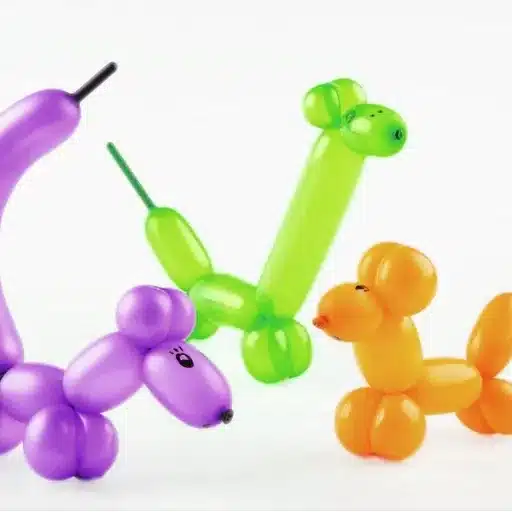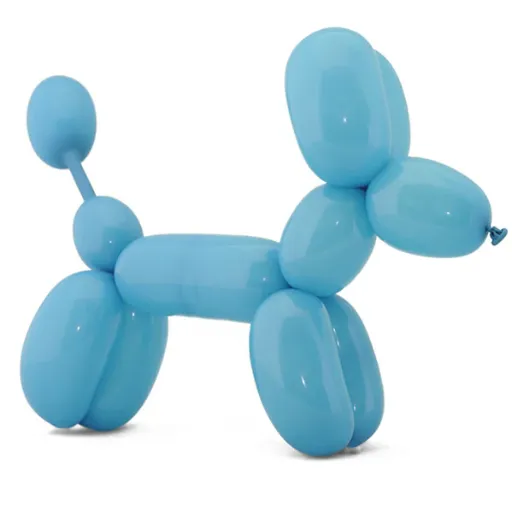Balloon twisting is a delightful, artistic, and surprisingly easy-to-learn skill that can make everyone happy, no matter their age. If you want to wow people at your next party, unleash kids’ creativity, or just try a new hobby, making balloon animals is an excellent choice. This guide is the perfect one for you as it will teach you the fundamental methods, tools, and hints to make your first balloon sculptures. Besides, you will not only be able to twist a sword but also to make a puppy and therefore be able to interact with kids or adults since everyone loves balloons! So, hang in there while we explain everything like a pro step by step, and you will be able to start right away and even surprise your mates with your newly acquired skill!
Introduction to Balloon Twisting
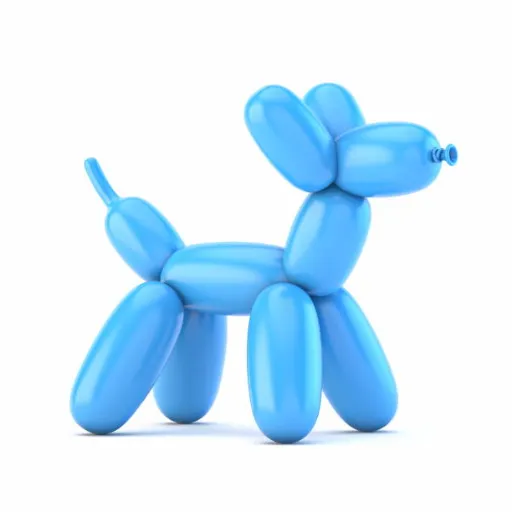
What is Balloon Twisting?
Balloon twisting or balloon modeling is the practice of molding and sculpturing balloons into various figures like animals, hats, flowers, or even abstract creations. With the help of special twisting balloons usually made of latex, it is accomplished by inflating, twisting, and folding to carry out the detailed shapes. This bubble making has been a crowd puller in the form of entertainment at parties, fairs, and other occasions, making children and adults happy too.
The balloon twisting industry has been always raising its interest slowly and steadily according to the recent data, which is a major reason behind its usage in entertainment and event planning. A simple search over the Internet reveals more than 1.5 million searches a month for the term “balloon twisting,” which is clear proof of its great popularity. Besides, the professionals commonly use good quality 260Q modeling balloons, which are specially made to bear the stress of intricate twisting without popping up, and they stretch and bend well, too, so that their skill is not in vain.
Benefits of Learning Balloon Twisting
Learning balloon twisting provides numerous advantages that go far beyond the craft and it is a rewarding experience for the people from all age groups. Firstly, it encourages the development of imagination and problem-solving capabilities. By coming up with and producing different figures, people actually go through the process of creative thinking and developing the skill of seeing and making intricate designs. A study on creative activities published by the Journal of Applied Psychology says that, hobbies like balloon twisting can boost the problem-solving skills by as much as 45%.
Another key advantage is the enhancement of fine motor skills and hand-eye coordination that has been made possible through balloon twisting. Precise movements in balloon manipulation require, and this can lead to a significant increase in dexterity in the long run. For the little ones up to their adult users this can help in growing their development or at least in the case of adults, in keeping their motor skills active and their agility intact.
Essential Supplies for Beginners
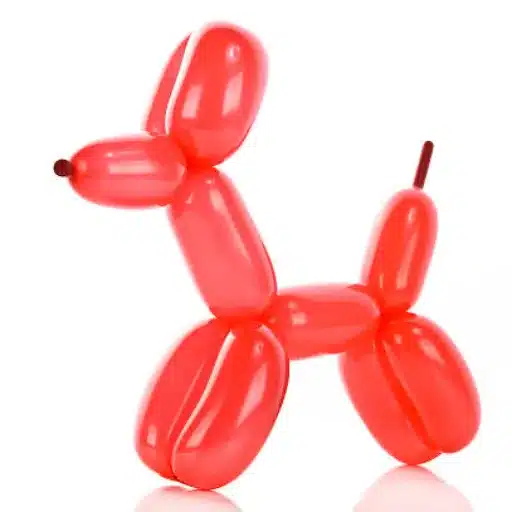
Balloons Categorization: Pick the Right Ones
| Balloon Type | Dimensions | Best Uses | Characteristics |
|---|---|---|---|
| 260 Balloons | 2″ diameter × 60″ length | Animal figures, general designs | Highly flexible and tough, suitable for beginners and professionals |
| 160 Balloons | 1″ diameter × 60″ length | Flower petals, headbands, intricate details | Thinner and more fragile, requires careful handling |
| 350 Balloons | 3″ diameter × 50″ length | Large arches, swords, sculptures | Heavier and stronger, perfect for long-lasting designs |
260 Balloons
These balloons are the most regular ones used in twisting and making animal figures or designs. “260” is the name given to these balloons because of their size when blown up—about 2 inches diameter and 60 inches length approximately. They are highly flexible and tough, which is why they are the most suitable for both amateurs and professionals. Leading makers of 260 balloons, qualified and betallatex, also provide the highest quality and dependability.
160 Balloons
Thinner and more fragile than 260 balloons, these are equipped for the tiniest details or for the most complicated designs, such as flower petals or headbands. Their being less thick makes them less strong but the creations are made smooth and beautiful. It is necessary to consider these are to be handled with so much care as they are more vulnerable to bursting.
350 Balloons
Having a width of about 3 inches and a length of 50 inches, these balloons are perfect for making bigger, sturdier creations like massive arches, swords or sculptures. They are heavier and stronger, which makes them good for creating long-lasting designs.
Pumps: Manual vs. Electric
Manual Balloon Pumps
Manual pumps are reasonable priced, small in size, and very light, making them suitable for instances where only a few balloons are needed, e.g. personal use or small events. The pumps can be categorized into two main types—single-action and double-action pumps. Double-action manual pumps are highly efficient as they compress air when both pushing and pulling the handle and hence they consume less time and effort to inflate balloons.
💰 Price Range: $5 – $20
Manual pumps are usually priced between $5-$20 depending on the brand and the type and so they are the ones you can afford the quickest being a consumer. However, if you are planning to inflate a large set of balloons, then it might be useful to look for an electric pump, as manual pumps may become time-consuming and physically tiring.
Electric Balloon Pumps
Electric balloon pumps are all about speed and convenience, especially when using them for large events or when dealing with dozen or hundreds of balloons. The majority of electric pumps are designed to inflate a balloon in a matter of seconds and often they are equipped with nozzles in various sizes suitable for different types of balloons including both latex and foil.
💰 Price Range: $25 – $100+
Automatic shut-off and dual inflation ports are just some of the advanced features that can be included in a pump that would further magnify its efficiency. Generally, the price of basic electric pumps can go as low as $25 but the prices for the more sophisticated, commercial-grade pumps can reach $100 or even higher. The IDAODAN Electric Balloon Pump and AGPtek Balloon Inflator are among the commercial as well as the artisan girls considered to possess very good quality and easy operations. Conversely, electric pumps are not that easy to carry around and nearly always access to electricity is a requirement, which sometimes results in their limited applicability in some places.
Beginner-Friendly Balloon Twisting Techniques

Understanding Basic Balloon Twisting Basics
Balloon twisting, or balloon modeling, is a technique that consists of inflating and molding long balloons with an intended purpose of making out of them different objects like animals, hats, flowers, etc. To start with, good quality twisting balloons should be selected, for example, 260Q from Qualatex which are very well known, as these are strong and not easily burst during sessions. A pump is to be mentioned as well; it is definitely going to make life easier than inflating by mouth which is so stressful and exhausting.
The ability to perform the basic twists like the pinch twist, lock twist, and fold twist forms the basis for the balloon twisting art. These basic elements serve as the skeleton of more complex dainties. For instance, a very simple but easy to learn blowing-dog pattern used by beginners is made of several basic twists for the head, legs, and body. It is said by online sources and expert guides that once the skill is acquired, it may take just about 1-2 minutes to make a basic balloon dog.
Creating a Simple Balloon Sword: A Quick Guide
Materials You’ll Need
You’ll just need one long balloon (260 balloon is the best option) and a balloon pump for quick inflation. Pick a bright or metallic color for the sword-like look of the balloon.
Inflate the Balloon
With the help of the balloon pump, inflate the balloon, keeping about 1–2 inches at the non-inflated end. This allowance is very important since it will keep the balloon from bursting while you twist it.
Create the Sword Handle
Beginning from the tied end of the balloon, take about a 6-inch measure and bend it to make a circle. Now twist the end of the filled balloon with the loop to fasten it. The sword’s handle will be made out of this.
Shape the Blade
The remaining balloon should be straightened for the blade. You need to check that the long part of the balloon is smooth and in line which is going to give it a razor-sharp sword-like appearance.
Common Mistakes and How to Avoid Them
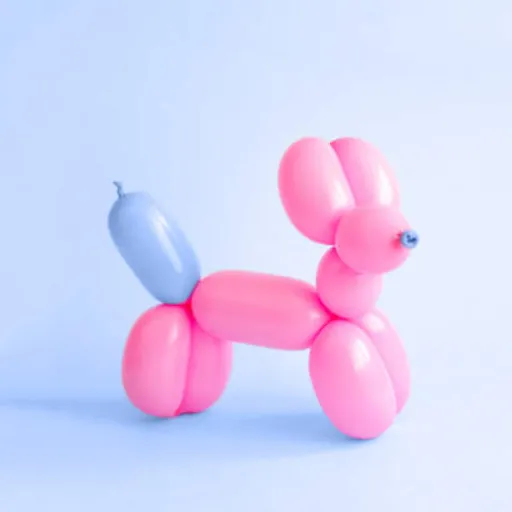
Mistakes That New Balloon Twisters Often Do
⚠️ Over-Inflating Balloons
One of the most common mistakes is not leaving enough space for twisting when filling the balloons. Balloons that are over-inflated are more likely to burst, especially when elaborate designs are involved. Consequently, a small tail of the uninflated balloon should be left at the end for air displacement that will occur during twisting.
⚠️ Using Low-Quality Balloons
Newcomers may choose to buy the cheapest balloons, thinking that all brands are alike. Nevertheless, poor balloons are difficult to handle and more prone to going off. The difference in your works can be significant if you switch to using professional-grade balloons like Qualatex or Sempertex.
⚠️ Twisting Without Pre-Stretching
Most of the beginners take the route of twisting without pre-stretching the balloons first. This results in the twists being uneven, and the tension is higher, causing the balloons to burst. The process of stretching the balloon lightly makes it more pliable and easier to control.
Keeping Balloons Good Quality and Long Lasting
Keeping the quality and life of balloons requires careful handling, proper storage, and using the right materials. To begin with, it is best to keep balloons in a place that is cool, dry and away from direct sunlight or high heat so that the latex does not degrade. Recent studies have shown that continuous UV exposure can lessen the strength of latex balloons up to 50%.
💡 Expert Tip: It is very important to inflate balloons to the correct size. Over-inflation can cause the balloon to fight and therefore, easier to break. Under-inflation, on the other hand, may result in a less vibrant and less durable look. It is a good idea to keep about 10% of the balloon uninflated to get maximum durability according to experts.
Advanced Techniques and Resources

Turning Balloon Twisting into a Small Business Opportunity
With the proper technique and commitment, balloon twisting can be a profitable small business. The worldwide party and event services market has been steadily growing and is expected to surpass the $345 billion mark in 2022, according to market analysis, and it is also predicted to keep on growing. In this large industry, balloon art is one of the most imaginative and nice services, which is also the reason for its presence in thus events and celebrations such as birthdays, weddings, corporate gatherings, etc.
First, concentrate on developing a professional portfolio that shows your artistic works. Social media networks such as Instagram and Facebook are superb for showcasing your talents and gaining the attention of potential customers. Moreover, think of getting a basic website where you can inform about your services, price range, and event package options. Moreover, working with event planners or local businesses might also be a good idea to create a flow of opportunities.
Reference Sources
-
Twisty Art
This guide offers insights into starting and growing a balloon twisting business, including identifying target audiences like children’s parties and event planners.
Source: Twisty Art -
Reddit – Balloon Twisting Community
A discussion thread where experienced balloon twisters share advice on engaging with families and children, particularly in restaurant settings.
Source: Reddit -
Quora – Balloon Twisting Enthusiasts
A platform where users discuss their motivations for learning balloon twisting, including its use in event decoration and entertainment.
Source: Quora
Frequently Asked Questions (FAQs)
❓ How do you do an apple twist in balloon twisting?
Performing an apple twist involves making a pinch twist at the beginning, then having a series of tiny bubbles to indicate the apple shape. Adding a green twist for the leaf would finish off the apple figure nicely.
❓ What is lock twist and how does it apply in balloon art?
Lock twist is a method of joining the two sections of the twine securely. To do a lock twist, grasp both parts and turn them together while making sure to lock them. This technique is very important in preventing your balloon art from falling apart.
❓ What is the correct way to fold a balloon for twisting?
The right way is to fold the balloon at the exact location where you want to twist and then proceed to make the twists. This method is used for forming tulips, for example, where you have to fold the balloon at the stalk to make it look like a petal.




